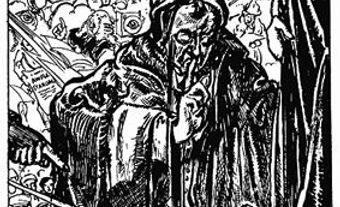Francis Hans Johnston (called Frank, and later Franz), painter (born 19 June 1888 in Toronto, ON; died 9 July 1949 in
Education and Early Life and Career
Among those who founded the Group of Seven in 1920, Frank Johnston was unusually well trained in academic practice, first at Toronto's Central Technical School with Gustav Hahn and at the then Central Ontario School of Art with William Cruikshank and George Andrew Reid. He studied in
The Group of Seven and Beyond
By 1921,
A versatile artist equally comfortable painting in oil, watercolour or tempera, Johnston painted everything from pastoral scenes in the Ontario and Québec countrysides to the landscape and peoples of the Arctic, where he was sent in 1939 by Gilbert LaBine, vice president of Eldorado Gold Mines. As his career evolved, he moved toward a traditional form of realism closer to that of 19th-century painters such as Homer Watkins than to the more modernist approach of such artists as Tom Thomson or Lawren Harris. Serenity

 Share on Facebook
Share on Facebook Share on X
Share on X Share by Email
Share by Email Share on Google Classroom
Share on Google Classroom





